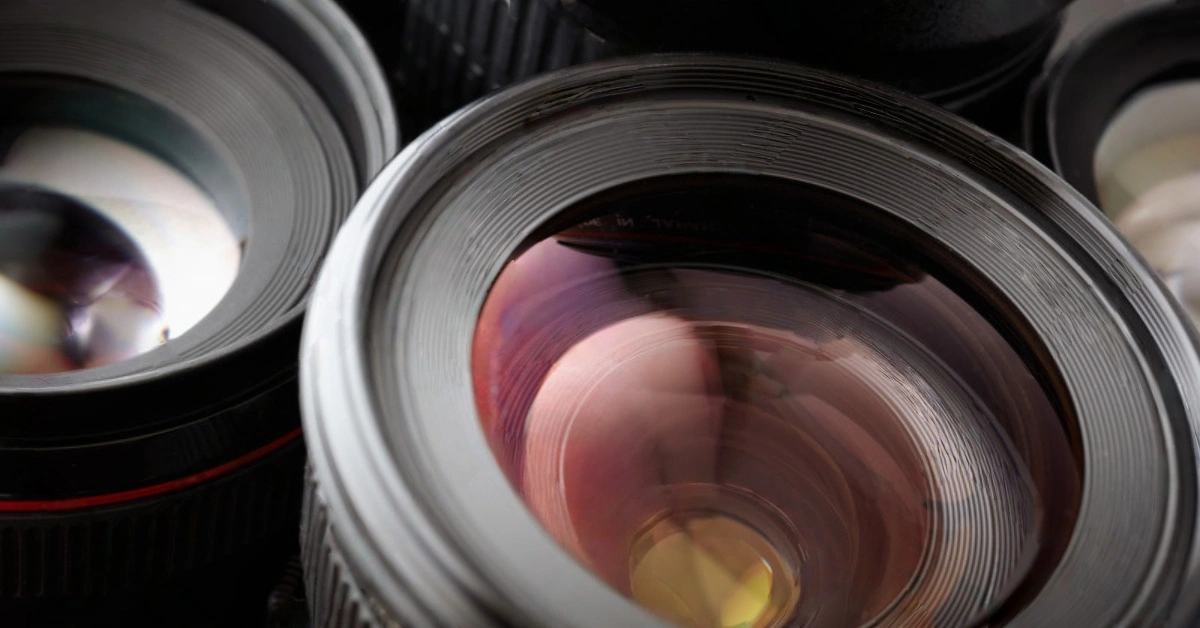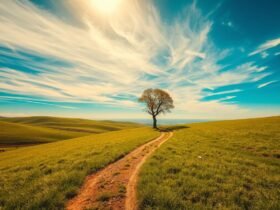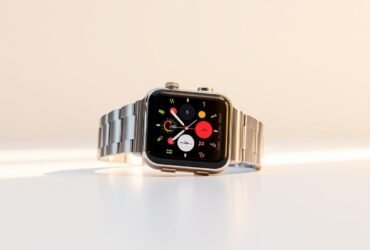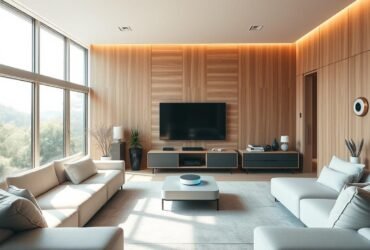I still remember the first time a lens drew light into a clear shape on a screen — it felt like finding a new language. That moment shaped how I work and why I care about every decision from idea to export.
I treat this craft as both art and practice. I focus on exposure, focus choices, and reading light so each photo tells its story.
I choose a camera setup to serve the image, not the specs. That keeps my attention on composition, the frame, and what makes an image feel honest.
My process grew from studying how lenses and sensors or film form pictures. That knowledge anchors my workflow and helps my photos last beyond a single year.
I balance creativity with discipline, use non‑destructive edits, and share finished work on social media selectively to protect deeper narratives.
Key Takeaways
- I view photography as “drawing with light” and a practical craft.
- Exposure, focus, and composition guide every creative choice.
- I pick a camera for the work I plan to do, not for specs alone.
- Understanding lenses and sensors improves the strength of images.
- My workflow favors nondestructive editing and reliable backups.
- I share selectively on social media to protect the story behind each photo.
How I Define the Craft: Drawing with Light
Light has always been the tool I use to translate a scene into something the eye can hold. I trace the craft from the camera obscura through Niépce, Daguerre, Talbot, and Eastman to show why the mechanics still matter.
From camera obscura to today’s cameras
The camera obscura projected an inverted view through a small aperture; Ibn al‑Haytham and early thinkers laid that groundwork. Niépce’s long exposure in 1826 and Daguerre’s silver methods in 1839 taught me to respect exposure and how it preserves photographs with detail.
Talbot’s paper negatives made multiple prints possible. Eastman’s roll and plastic advances shaped film, safety, and how modern cameras handle media.
What “recording light” really means for your images
Recording light is practical: time, intensity, and sensitivity working together to form an image. Each camera, lens, and photosensitive medium is a part of that translation.
“The same physics, the same light, and the same core decisions guide my photos today.”
- I watch direction and duration to avoid clipped highlights and muddy shadows.
- Knowing these terms saves years when I refine how images look on any day and with any camera.
Mastering the Exposure Triangle the Way I Use It
Mastering exposure turned my guesses into repeatable outcomes in the field.
I treat aperture, shutter speed, and ISO as an interlocking set of choices that shape tone, motion, and detail. Each setting directly changes brightness, so I move them with intent rather than by habit.
Aperture for depth and sharpness
I pick aperture to control depth of field and lens performance. Stopping down gives edge‑to‑edge sharpness but risks diffraction at very small f‑stops.
Practical rule: open for subject isolation, stop down for landscapes or when composition demands full sharpness.
Shutter speed for motion and stability
Shutter speed decides whether motion freezes or flows. I factor focal length and body stability when choosing the minimum safe speed.
If I need long exposure, I use a tripod before raising ISO. For handheld action, I trade aperture and ISO to maintain a fast shutter.
ISO for clean files and highlight safety
ISO is my last resort. I keep it at base (often ISO 100) to protect highlights and texture in bright skies.
On mirrorless bodies I enable a live histogram or zebras to avoid clipped highlights. When light drops, I prefer a tripod or slower shutter before increasing ISO unless motion forces me otherwise.
“Lower ISO and use histograms to keep highlight detail—this habit saved more shots than any single lens.”
- I break down the triangle into field terms so you can take photos predictably.
- I follow an hour‑by‑hour mindset: tripod first, slower shutter next, ISO last.
- I build practice routines that make exposure decisions second nature.
| Goal | Typical Setting | Why I choose it |
|---|---|---|
| Subject isolation | Wide aperture (f/1.8–f/4) | Shallow depth, pleasing background blur |
| Landscape sharpness | Mid to small aperture (f/8–f/16) | Edge‑to‑edge clarity, mind diffraction at smallest stops |
| Motion freeze | Fast shutter (1/500s+) | Stops action; increase ISO only if needed |
| Low light static scenes | Tripod + slower shutter | Keeps ISO low, preserves highlight texture |
Focusing with Confidence: My Autofocus and Manual Habits
Nailing focus is less about gear and more about decisions you make before you press the shutter. I set intent first, then pick the mode that matches the scene so my photos stay sharp where it matters.
Single‑servo vs. continuous‑servo
For still subjects I use single‑servo (One‑Shot AF). It locks quickly and lets me recompose without hunting.
For motion I switch to continuous‑servo (AI‑Servo). It tracks movement and keeps the subject focused as it crosses the frame.
When I go manual
I move to manual focus when AF struggles—very low light, low‑contrast subjects, or tricky backlight. Manual lets me fine‑tune and lock on the critical point, like an eye or a small detail.
- Area strategy: single point for precision, expanded or zone for erratic motion.
- Pre‑focus: anticipate movement and half‑press or pre‑lock to minimize lag.
- Field checks: zoom review on the back of the camera to confirm focus before leaving a scene.
- Troubleshooting: distinguish motion blur from missed focus; adjust AF sensitivity or turn subject detection off when it confuses the camera.
“A quick focus routine and steady support save more shots than a faster lens.”
Light First, Always: How I Shape, Soften, and Balance It
Every decision I make begins with observing the quality, direction, and intensity of the light. I judge whether to soften, flag, or embrace contrast before I change exposure.
Reading direction, quality, and intensity
I look for catchlight direction, shadow edges, and how the background compares to the subject. This tells me if I should move, rotate the subject, or change the angle.
Keeping highlights intact with histogram and zebras
On mirrorless camera bodies I enable the histogram and zebras on the screen. That live feedback stops clipping and preserves highlight texture in skies and bright areas.
Working a scene when the light isn’t “perfect”
If highlights risk clipping I lower ISO to base and use a faster shutter. I use fill flash, reflectors, or open shade to control harsh shadows.
- I reposition or wait for the day to offer softer light when backlight washes detail.
- I bias white balance in-camera to guide mood when color temperature shifts matter.
- I step into open shade to flatten harsh contrast or lean into hard light for a graphic image.
Field routine: read light first, set base ISO, choose shutter, then allow modest ISO rise only if motion or exposure forces it. Small moves in angle often separate the subject from the background and save a shot.
“Light decisions come before composition or gear; make them your first check in the field.”
| Situation | First Action | Why it helps |
|---|---|---|
| Backlit subject | Add fill or expose for subject | Retains detail in faces while holding background texture |
| Bright sky + subject | Use histogram/zebras, lower ISO | Prevents clipped highlights and preserves tonal gradation |
| Harsh midday | Step to open shade or add diffuser | Soften shadows and protect skin tones |
Composition I Rely On to Make Photos Stronger
I train my eye to favor balance and negative space before I lift the camera to my face. That habit keeps decisions quick and intentional in the field.
Balance, simplicity, and visual weight
Balance matters: I place bright, colorful, or large elements so the eye moves easily to the point I want.
I use simplicity to remove distractions. A quieter background makes the subject read faster.
- I weigh brightness, color, and size to keep the composition stable.
- I borrow a film-era discipline: fewer frames, clearer choices, sharper intent.
- When I break rules it is to make a clear point that helps the image, not to shock.
Framing and edges that don’t cut the story short
I avoid cutting limbs or important details at the frame edge. Horizons stay level and lines stay clean.
Before I press the shutter I scan each side for intrusions or mergers that wreck a good photo.
“Scan all four sides—this short step prevents sloppy results.”
- Quick checklist: subject, light, edges, horizon, breathing room.
- Exercise: shoot ten frames with one subject, vary height and side shifts to learn what helps.
Move Your Feet, Change the Frame
A small step to the left or right can remake the whole scene. I use height, distance, and angle to change how subjects relate to each other and to the background.
Eye level often wins: with people or wildlife I try an eye‑level view first. It isolates the subject and gives a cleaner background blur that helps the point read at a glance.
I test compression by stepping back and zooming in, then compare that to moving forward for a wider perspective. Each move changes lines, scale, and tension more than a minor focal tweak.
- I take multiple angles before I leave—three heights (low, eye, high) is a quick drill to add variety when I take photos.
- I scan the landscape foreground and shift to remove clutter while keeping story elements intact.
- If I can’t move, I change lens choice, ask the subject to shift, or wait for better light to get the same point.
- I watch the background as I move because it decides whether the subject pops or fights for attention.
“Moving your feet is the fastest way to better composition.”
In my practice, repositioning is the simplest, most reliable way to improve photography in the field.
Tripods in My Process: Stability, Sharpness, and Creative Control
A steady support changes what I can see and how I can record a scene. I rely on a tripod when stability directly improves image quality and creative options. Tripods virtually eliminate camera shake and let me expose for minutes or even an hour to reveal detail the eye misses.
When a tripod is non‑negotiable
Landscapes, macro, and architecture are my must‑use situations. At high magnifications IBIS can’t match a locked‑down head. For still life or long time sequences, a tripod gives the control I need to produce the sharpest photos.
Choosing height and angle for isolation
I set legs and head to frame without mergers and to control background relationships. Lower height can isolate a subject; higher vantage points remove clutter. I match a lens to the composition so vibration is minimized at critical apertures.
- Use a remote release or self‑timer to avoid introducing shake at the shutter.
- Spread legs wide, avoid over‑raising center columns, and level the head every time.
- Tripods let me bracket, focus‑stack, or blend exposures cleanly for complex scenes.
“A locked camera is a patient camera—tripods slow my work in the best way.”
| Situation | Why I use a tripod | Quick setup rule |
|---|---|---|
| Long exposure | Capture low‑light detail | Low ISO, remote release |
| Macro | Prevent tiniest motion blur | Head with fine‑pitch control |
| Architecture | Keep lines true, enable focus stacks | Level, vertical head adjustments |
- If I must move fast (events, crowds), I leave it behind and steady technique replaces it.
- Decision tree: will tripled control (stability, time, precision) improve the shot? If yes, set up; if no, go handheld.
Flash Beyond the Dark: My Fill Flash Essentials
I aim for natural-looking fill light that supports, rather than overwrites, the ambient tone. Fill flash is a tool I use to restore balance when contrast or direction of light hides detail.
Bounce indoors for natural skin tones
Indoors I tilt an external flash into the ceiling or a white wall. That softens shadows and gives more natural skin color without harsh specular spots.
Quick test: set low power (1/16–1/8), take a frame, then adjust angle until skin tones look even.
Daylight fill to tame harsh shadows
On a bright day a gentle burst reduces deep shadows on faces. I sync to a safe shutter speed, dial exposure bias for the ambient, and keep flash power low so the sun still reads as the main light.
Even a built-in flash can work as daylight fill if I diffuse it or bounce with a small modifier to avoid flat, harsh highlights.
- I pick modifiers and angles to match lens focal length and subject distance.
- Color-temp matching keeps mixed light from looking odd; gels are simple fixes.
- When background or light is better served by moving, I skip flash and reposition instead.
“A soft, low-power flash keeps people separate from busy backgrounds and adds catchlights that bring eyes to life.”
| Setting | Typical value | Why I use it |
|---|---|---|
| Flash power | 1/16–1/4 | Subtle fill that preserves ambient light |
| Sync | Camera safe speed / HSS if needed | Balance motion and ambient exposure |
| Test | One ambient + one flash frame | Quick check for natural blend |
Keep the Optics Clean: Lenses, Filters, and Image Quality
Clean glass pays off immediately: crisper frames, truer contrast, and fewer surprises when I edit.
Smart cleaning habits I follow
I use a blower first, then a soft brush, a microfiber cloth, and a few drops of dedicated solution when needed. I never touch the glass with a shirt or harsh tissue.
Internal dust rarely harms images, but grime and fingerprints on the front element can soften photos and add flare. I inspect the front and remove smudges before shooting bright highlights.
When a filter helps—and when it hurts
I avoid cheap protective filters. They often reduce corner sharpness and increase ghosting. I carry a high‑quality filter only for sand, salt spray, or rock fragments.
Good filters show three design cues: reliable coatings, perfectly flat glass, and sturdy ring threads. Those factors preserve optical quality and keep my camera workflow predictable.
- I learned from film habits to keep kit minimal in harsh conditions: swap fast, clean fast, shoot steady.
- Polarizers and ND filters expand creative options; I add them when the effect outweighs risk.
- Field routine: check for flare, rotate or remove the filter, then test a frame before committing.
| Issue | Action | Why it works |
|---|---|---|
| Front smudge | Microfiber + solution | Restores contrast and sharpness |
| Blowing sand | High‑quality protective filter | Protects front element, easy to replace |
| Corner softness | Remove cheap filter | Sharpness returns; flare drops |
Minimal kit: blower, brush, microfiber, small solution, one trusted filter, and a padded pouch. That keeps my lens surfaces pristine and lets me focus on the shot, not cleanup.
Shooting RAW and Editing with Intent
I start every edit with the intent to preserve what the camera already promised. RAW files retain far more latitude than JPEG, so I shoot RAW when I plan to edit. That choice gives headroom for subtle, targeted adjustments without destroying highlight or shadow detail.
Non‑destructive workflow I trust
I import original files and keep them untouched. I store edits as sidecar files or within a catalog so the original photo and RAW remain safe.
I name versions clearly and use a simple folder structure to make collaboration and future revisions straightforward.
Subtle edits that guide the viewer’s eye
I use local contrast, selective color, and luminosity masks to draw attention where it belongs. One global change is often enough; masks help when one area needs refinement without altering the whole image.
“Heavy edits can’t fix a fundamentally weak photo—treat RAW as rescue, not a crutch.”
- I enable histogram and zebra displays on the screen while shooting to protect highlights for later work.
- I apply lens profiles, then noise reduction and sharpening in that order for consistent image character.
- I keep edits consistent across a series so photos read as a unified body of work.
| Export Purpose | Format | Profile/Size | Compression |
|---|---|---|---|
| TIFF or high‑quality JPG | Adobe RGB, 300 ppi | Lossless or minimal | |
| Web | JPEG | sRGB, 2048 px longest side | Medium (quality 70–80) |
| Social media | JPEG | sRGB, platform‑sized | Higher compression, sharpen slightly |
| Archive | Original RAW | Native camera medium | No compression |
Practical checklist: shoot RAW, enable histogram/zebras, import non‑destructively, apply lens profile, do global then selective edits, export per medium, and version your files. This way, each image keeps its integrity and your process stays fast and repeatable.
My 3‑2‑1 Backup Rule and File Organization
I design my storage so the worst hardware fault never costs me an image. I follow the 3‑2‑1 rule: three copies, on two different types of media, with one copy off‑site at all times.
I keep files organized by year and month (for example, “2024/01 January”). This folder structure scales easily across years and stays fast when I search for work over time.
Redundant, off‑site, and mixed‑media backups
I maintain one master on a NAS, a second on an external SSD, and a third in cloud storage. I verify checksums weekly and rotate a physical drive off‑site every month.
Folders, collections, and tags that keep me fast
In my catalog I use collections for projects and tags for quick filters: client name, location, and keywords that describe the point or intent of the shot.
“Three copies, two media types, and one copy away from home: that habit protected my work more than any single device ever could.”
- Folder system: /YEAR/01 January → month folders keep browsing fast.
- Collections: group selects by project so exports are instant.
- Tags & metadata: consistent keywords save hours on retrieval.
- Archive policy: move projects older than three years to cold storage and log location in a simple index file.
- Travel routine: keep two on‑site copies while away; merge and verify within 48 hours of return.
| Need | Primary | Secondary | Verification |
|---|---|---|---|
| Working files | NAS (RAID) | Local SSD | Weekly checksum |
| Off‑site copy | Cloud (encrypted) | Rotated HDD off‑site | Monthly restore test |
| Long‑term archive | Cold storage (tape or deep cloud) | Offline HDD in safe | Annual audit |
Maintenance checklist: weekly checksum, monthly off‑site rotation, quarterly restore tests, and annual metadata cleanup. This process keeps my photos and images available for years and lets me focus on creative work, not panic recovery.
Experimenting to Grow: Techniques I Practice
I set simple constraints—one lens, one hour—to force creative choices and sharpen technique. That habit keeps experiments focused and useful for real shoots.
Macro, landscapes, and low light
I practice close‑up macro to learn depth control and fine detail. I also test long exposures and low‑light setups to expand how I handle shadows and highlights.
These small routines build confidence so I can use the same methods during client work without surprises.
Blends, panoramas, and new perspectives
I stitch panoramas and blend exposures to keep results natural while extending dynamic range. I vary height and angle—higher, lower, wider—to change how landscape and people images read.
- I test ideas safely before client shoots and treat failed attempts as lessons.
- I learn from other photographers and fold useful tricks into my regular practice.
- Constraints (one focal length, one hour) sharpen creativity and speed.
- I map a quarterly plan: one technique per month, then a short review.
“Growth happens fastest when experiments inform everyday photography.”
That simple idea keeps my experiments practical, measurable, and directly useful to the images I make.
Printing Photos for Life Today: From Screen to Wall
Printed work changes how I live with an image; a wall can make a memory feel permanent. I prepare files and pick prints so what I see on the screen arrives intact on the wall.
Choosing canvas, metal, and sizes for impact
Canvas adds warmth and texture. It suits film-like tones and softer portraits.
Metal gives vivid color and a modern edge. It works well for bold landscape pieces and high-contrast scenes.
I match the medium to the subject so each print shows the intended mood and strength.
Seasonal gallery walls and swapping images
I anchor a gallery with one large centerpiece and surround it with smaller supporting images. That design makes seasonal swaps easy.
Color management is key: I soft-proof, pick a trusted lab, and choose finishes that preserve the quality I expect.
- Size to viewing distance: bigger for living rooms, smaller for hallways.
- Mounting: use protected mounts and UV-safe glass where needed.
- Rotate prints seasonally to refresh a room without redoing the whole wall.
| Print Type | Best Use | Finish |
|---|---|---|
| Canvas | Portraits, warm scenes | Matte, textured |
| Metal | Vivid landscape, modern interiors | Gloss or satin |
| Paper (framed) | Fine art, limited editions | Mat or gloss with glazing |
“A well-made print becomes part of daily life—choose files, lab, and mounting with that in mind.”
Turning Fall Memories into Custom Photo Decor
Warm light and seasonal color make the simplest moments prime candidates for printed displays. I choose frames from pumpkin patches, apple orchards, hayrides, and candid family gatherings because they bring warmth and charm into a room.
Pumpkin patches, orchards, and candid family gatherings
I favor candid pictures of people at family get‑togethers. Those images show expressions and small gestures that become cherished over the year.
Practical tip: select frames with soft light and warm tones from the day to keep skin tones natural when printed.
Scenic landscapes with warm tones that cozy a room
I pair wide landscapes—burnt orange, deep reds, lush greens—with intimate family photos to tell a fuller seasonal story. Mixing canvas and metal adds texture and modern contrast.
- I sequence prints so the eye moves from a large landscape to smaller family moments.
- I add small captions or dates to make pictures feel like heirlooms.
- I plan seasonal swaps: swap two or three pieces rather than redo an entire wall.
| Print Type | Best Use | Recommended Finish |
|---|---|---|
| Canvas | Warm portraits, cozy scenes | Matte, textured |
| Metal | Vivid landscapes, high contrast | Satin or gloss |
| Framed paper | Mixed series, galleries | Mat with UV glass |
“Choose images that feel lived in — those become the prints people return to year after year.”
photography
Recording light well begins with a decision: what story do I want the final image to tell? That choice steers every technical move, from lens selection to exposure and file handling.
I pick a camera for the job, not the spec sheet. The best camera is the one I will actually carry. Comfort, battery life, and lens options matter as much as resolution.
I summarize how images become photos: a lens projects a scene, then a sensor converts photons to electrical charges, or film exposes an emulsion that chemistry later renders. Those steps shape my technical decisions.
- I balance digital speed and archival latitude against film’s tonality and texture.
- I curate what goes public and protect private moments; I secure consent and blur or omit others when needed.
- I keep strict habits: consistent backups, clear file names, and organized folders so work stays findable.
I keep studying fundamentals so new cameras and software extend, not replace, core skills. Collaboration with other photographers and editors keeps my process fresh and grounded.
“Make every choice serve the image — from concept to delivery.”
Conclusion
Good results come when I prioritize decisions—light, exposure, focus—before anything else. That habit frames my process and keeps work repeatable across days and years.
I recap the essentials: set the light first, compose with care, expose for detail, and focus with confidence. I carry a simple checklist when I shoot and edit non‑destructively from the camera to the screen and on to print.
Lessons from film still guide my choices today: slow down when needed, move your feet to change the frame, and always review edges before you leave a scene. Protect files with redundant backups so your photos survive beyond one project.
Quick checklist: light first, compose with care, expose for detail, focus with confidence, finish with purpose.
FAQ
How do I define the craft when I say “drawing with light”?
I mean using a camera and lens to record light intentionally. It’s about reading direction, quality, and intensity, and choosing aperture, shutter speed, and ISO so the image communicates a clear idea rather than just capturing a scene.
How did the camera obscura evolve into modern cameras I use?
The camera obscura was a simple device that projected an image; today’s cameras build on that principle with precise lenses, digital sensors, and advanced autofocus systems. I rely on these tools to control exposure, frame, and focus with consistency.
What does “recording light” practically mean for my images?
It means I treat light as my primary subject. I meter for key areas, protect highlights with the histogram, and shape shadows with reflectors or fill flash so the final image matches my intent.
How do I use aperture to affect depth and sharpness?
I pick a wide aperture to isolate a subject and blur backgrounds, and a smaller aperture to increase depth of field for landscapes. I balance sharpness and diffraction based on lens performance and shooting distance.
When do I choose shutter speed for motion versus stability?
I use fast shutter speeds to freeze action and slower speeds to convey motion. If I need stability at slow speeds, I add a tripod or image stabilization and move my feet to change the frame rather than relying on digital tricks.
How do I manage ISO to keep files clean while protecting highlights?
I raise ISO only as needed to maintain shutter and aperture choices. I prefer cleaner files, so I expose for highlights and lift shadows in RAW when necessary, keeping noise under control.
When do I use single-servo vs. continuous-servo autofocus?
I use single-servo for static subjects and continuous-servo for moving subjects. Continuous mode helps me track change, while single mode lets me confirm precise focus before releasing the shutter.
When do I switch to manual focus?
I move to manual when autofocus struggles—low light, macro work, or scenes with low contrast. Manual focus gives me control for critical points and creative focus pulls.
How do I read direction, quality, and intensity of light on location?
I assess shadows, highlight placement, and specular reflections. I position myself to use flattering light, soften it with diffusion, or add fill so the subject retains texture and form without harsh clipping.
How do I keep highlights intact with tools like the histogram?
I watch the histogram and zebras to avoid clipping. If highlights clip, I reduce exposure or add fill, and when possible I bracket exposures for safety or blend images later.
What do I do when the light isn’t “perfect”?
I adapt: change angle, use reflectors or flash, embrace mood with shadows, or convert the scene to black and white. Imperfect light often yields more character than flat, even illumination.
What compositional rules do I rely on to make images stronger?
I favor balance, simplicity, and clear visual weight. I remove distractions, use leading lines and negative space, and place the subject to guide the viewer’s eye through the frame.
How do I frame scenes without cutting the story short at the edges?
I check edges for clipped limbs or objects that break flow. I step back or move left and right to include contextual elements that support the story rather than distract from it.
Why do I say “move your feet, change the frame”?
Physical movement changes perspective, scale, and foreground-background relationships in ways lenses alone cannot. I walk around a subject to find the most compelling view before adjusting gear.
When is a tripod non‑negotiable in my process?
I use a tripod for long exposures, precise framing, panoramas, and low‑light scenes where any motion would blur critical detail. It also helps with consistent framing for multi‑image blends.
How do I choose tripod height and angle for subject isolation?
I match tripod height to the subject’s eye level or intentionally vary it for effect. Low angles give scale and drama; higher angles offer context. I lock the head so the frame stays steady during longer captures.
How do I use flash as fill to improve portraits indoors?
I bounce flash off ceilings or walls to create soft, natural skin tones. I reduce power to avoid flat light and combine ambient exposure with controlled flash to preserve mood while opening shadows.
When do I use daylight fill flash to tame harsh shadows?
I add subtle flash outdoors when contrast is extreme—midday sun or backlit scenes. A small amount of fill balances faces with bright backgrounds without making the subject look artificial.
What cleaning habits do I follow to keep optics and image quality high?
I regularly clean lenses with a blower and microfiber cloth, check sensors periodically, and store gear in cases with silica packs. Clean glass prevents spots and preserves contrast and resolution.
When does a filter help, and when does it hurt image quality?
I use UV or polarizing filters to reduce glare and enhance skies, but I avoid cheap glass that softens the image. Neutral density filters help for long exposures; quality matters to keep sharpness intact.
Why do I shoot RAW and what workflow do I use for editing?
I shoot RAW to retain data and flexibility. My non‑destructive workflow uses Lightroom or Capture One, where I make global adjustments, then refine local edits to guide the viewer’s eye without overprocessing.
How do I make subtle edits that still lead the viewer?
I adjust contrast, color balance, and selective sharpening sparingly. My goal is clarity and emphasis, not altering reality; I enhance what was already present to strengthen the story.
What is my 3‑2‑1 backup rule and how do I organize files?
I keep three copies of files on two different media with one off‑site copy. I use clear folders, collections, and tags so I can find images fast and reproduce prints or client galleries reliably.
How do I experiment to grow my technique?
I practice macro, landscapes, and low light regularly. I try blends, panoramas, and new perspectives to expand my visual vocabulary and keep the creative process fresh.
How do I choose materials when printing photos for walls?
I match image mood to material—canvas for warm, textured work; metal for crisp, high‑contrast scenes. I pick sizes and framing to fit the space and viewer distance, ensuring the print makes an impact.
How do I turn fall memories into custom decor?
I capture candid moments in pumpkin patches, orchards, and scenic landscapes with warm tones. Then I select prints or canvases that fit seasonal gallery walls and swap images to refresh a room.
How often should I review and refresh my gear and techniques?
I audit gear and skills at least yearly. I clean and test equipment, update software, and try a new technique each season to stay sharp and adaptable.











Leave a Reply